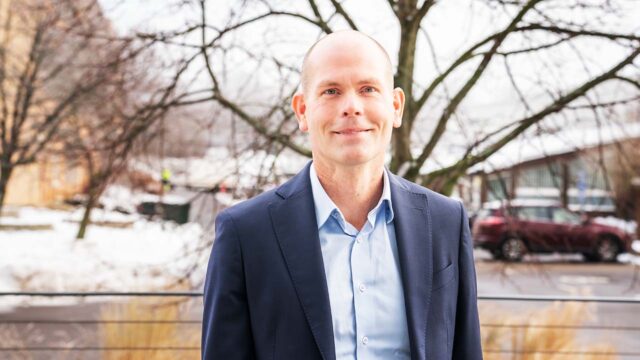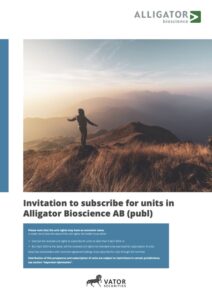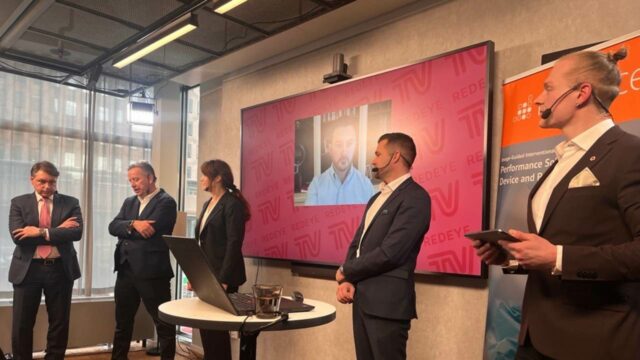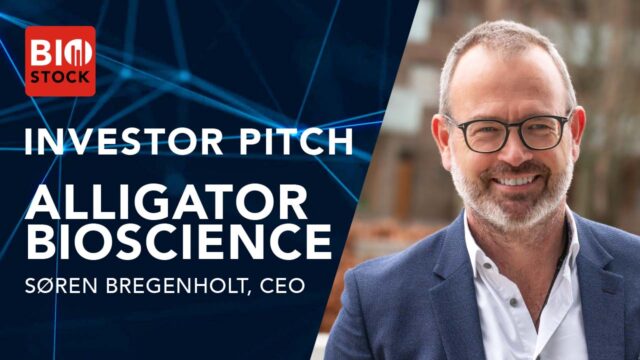On March 21, Mentice arranged a Capital Markets Day in Stockholm, where the management presented the company’s updated financial targets and strategic direction. The event was also attended by two guest lecturers, Dr. Demetrius Lopes and Michael Lee, who discussed the benefits of Mentice’s simulation solutions for healthcare and the medical technology sector.
Gothenburg-based Mentice is a market leader in the development of simulation solutions for endovascular surgery, i.e. Image Guided Interventional Therapies (IGIT). These are minimally invasive procedures used to diagnose and treat vascular diseases – diseases that affect the vessels or related organs such as the brain or heart. The IGIT market is experiencing robust growth driven by a notable shift from open surgery to minimally invasive procedures.Formulärets överkant
Mentice’s simulation systems can be seen as “flight simulators” for healthcare that allows physicians to practice the procedures in a safe, realistic and patient-specific environment before they are carried out in real life situations. In addition, the simulation can be used as decision support during the procedures and for evaluation afterwards – all to optimize the physicians’ skills, patient safety and the outcome.
During the Capital Markets Day, strategic direction was presented
On March 21, Mentice arranged its first Capital Markets Day since its IPO on Nasdaq First North in 2019. The event began with CEO Göran Malmberg presenting the company, which today has over 120 employees globally. This was followed by a newly produced company film – watch it here.
That same morning, Mentice published a press release announcing an updated strategic direction, to get closer to clinical operations. The strategy includes continued investments in R&D to develop the next generation technology platform and standardization of the product portfolio.
In addition, the company plans to further develop OEM (Original Equipment Manufacturer) channels and continue to establish strategic partnerships with the company’s key customers in the medical device industry. For OEMs, it is a matter of establishing relationships with suppliers to Catheterization Laboratories (Cath Lab), where IGIT interventions are performed.
Financial target: continued growth and improved profitability
During the Capital Markets Day, CFO Ulrika Drotz Voksepp also spoke about the company’s financial figures and the updated financial targets. Ulrika pointed out that Mentice aims to continue to grow at a steady pace, while at the same time, they want to improve profitability gradually and maintain positive cash flow. She also commented that Mentice should be assessed on an annual basis or on a rolling 12-month perspective as the company continues to be sensitive to individual orders and the distribution of sales during the year.
The company presented updated financial targets where the plan is to achieve a 20-30 per cent annual growth in net sales, as well as an EBITDA margin of 20 per cent in the medium term (three years) and a long-term target of 30 per cent for EBITDA.
The company’s previous target, set in 2019, was to achieve an average annual sales growth of 30-40 per cent, as well as an EBITDA margin of 30 per cent.
Ulrika noted that these financial targets have been changed to adapt to today’s conditions, as well as to the strategic plan presented during the Capital Markets Day, where the company continues to invest in the technology platform and development of the market.
Last year, sales increased by 25.5 per cent, from 218 million SEK to 273.6 million SEK. Sales per employee increased by 30 per cent.
Market position and opportunities for expansion
The next speaker on stage was Martin Harris, Vice President Marketing, who talked about Mentice’s market position and how the company’s simulation solutions handle clinical challenges. In hospitals around the world, Mentice’s simulations are used for training and planning procedures. In addition, the products are used by leading medical technology companies for clinical evaluation, market launch of new products and training of healthcare professionals. Sales to the medical technology industry are already well established, and Mentice aims to deepen its presence in hospitals and clinics.
Focus on benefits for healthcare and patients
During the event, COO Jonatan Sjöström talked more about the company’s market position and strategic direction, as well as his first months as COO at Mentice. He emphasized that he appreciates that Mentice’s culture is permeated by a desire to constantly improve the doctors’ skills and ensure the best possible care for patients. In addition, he talked about the possibility of expansion through the development of the core technology, software, opportunities for complementary products, and the use of AI.
Jonatan also talked about the company’s plans to add sales resources and continue to enter strategic collaborations with medtech companies, along with an even greater focus on working with Key Opinion Leaders to get closer to the hospital market. The company’s sales are primarily focused on the US, Europe, Japan and China.
Successful customer examples
The Capital Markets Day also included two guest presenters, the first of whom was Dr. Demetrius Lopes, Director Cerebrovascular and Comprehensive Stroke Center at Advocate Health Care. Dr. Demetrius Lopes is a surgeon in neuroendovascular procedures and a renowned Key Opinion Leader in the field. He is also an experienced user of Mentice’s simulation tools. Dr Lopes described just how he utilizes both Mentice VIST, flow models as well as Ankyras for his day-to-day operations. Ankyras are an important part of surgery planning as it helps them to better assess the conditions of each specific patient and which clinical instrument is most suitable.
The second guest speaker was Michael Lee, director of EBR Systems, which has developed the world’s first wireless and implantable heart stimulation system for heart failure. For this particular procedure, a well-developed training program for the doctors is crucial to ensure patient safety and good results. The company has chosen Mentice simulation technology, as it is believed that it provides realistic training for the implant. According to Michael Lee, Mentice’s simulation platform was instrumental in performing the studies required to obtain FDA approval.
Realistic experience is important in simulation
CTO Henrik Storm went through the basic components of the weight of Mentice’s technology, as well as what is important to consider when it comes to the company’s research and development. Among other things, he talked about the work of always improving in the way that Mentice replicates reality through visual realism, anatomical realism, instrument and device realism, haptic realism and procedural realism. The expectation from the market is that the total environment in such a realistic way replicates reality in terms of both X-ray and ultrasound images, anatomy models, and clinical instruments.
CEO sums up the Capital Markets Day
The Capital Markets Day concluded with a summary comment from CEO Göran Malmberg. During the event, there was also an opportunity to get a demonstration of Mentice products and ask questions directly to the presenters.
BioStock reached out to Göran to get his thoughts on the Capital Markets Day.
What do you think were the highlights of the Capital Markets Day?
– For us, I think the presentations from Dr. Lopes and Michael Lee, in a good way show how important our products are to our customers. Of course, it was a good opportunity for us to clarify and give our audience a clearer picture of what we do.
A key part of the updated strategy seems to be to reach out to the hospital market. What challenges do you see in reaching out to the day-to-day clinical operations?
– There are several challenges, but little of what we talked about during the Capital Markets Day is both financing and issues related to the reimbursement of doctors for training. There are structures for reimbursement regarding the initial training of specialists, but the structures for continuous training are not as clear.
During the Capital Markets Day, you had two customers present, Dr Demetrius Lopes and Michael Lee, who presented the benefits of Mentice’s products in their business. What was the most important message in their presentations?
– Dr. Lopes is one of the world’s most accomplished and recognized neurosurgeons. The fact that he can tell us how he uses all our main products in his business, I think, is an essential message and exactly in line with our ambition.
– EBR System is a highly innovative company and I think it shows once again how valuable our products are for the entire value chain from device development, via launch, to safe use in healthcare. I think it was important, as Michael told me, that they implemented a structure where doctors simulate before each procedure on the patient to make sure that you are always prepared in the right way for a procedure.
You also presented updated financial targets during the event. Why do you choose to lower your goals?
– Our previous goals were set in 2019 when Mentice was half the size. At the time, we expected that our sales through our strategic channel would develop significantly faster. Since then, we have managed to double the size of the company, i.e. maintained an average growth of 22 – 23 per cent while improving our profitability.
– With the new goals, we would like to emphasize a few key points: Mentice is a growth company with the ambition to continue to grow at a high pace, i.e. 20 – 30 per cent. We also see that we need to invest in our long-term growth, both in terms of development, sales and marketing. This means that we will reinvest in growth and therefore set a target of 3 years to increase our profit from just under 10 percent in 2023 to 20 percent in 2026. By 2026, we will see continued growth towards an EBITDA margin of 30 per cent. I would see this as a continuation of an ambitious and aggressive growth plan, which is now adapted to the conditions we see in today’s market.
So far, you’ve acquired seven companies to bolster your product portfolio. How do you perceive the potential for further acquisitions?
– We are constantly monitoring what is happening in the market and there are many exciting opportunities, even if the current situation makes it more difficult to use our shares as a means of payment. Acquisitions will continue to be an important part of our development, but our base and targets are based on organic growth.
Finally, what concrete changes will take place based on the new strategy and the new financial targets?
– The most important message to the market is that we are investing in growth, i.e. we are focusing on our technology platform and we are expanding by continuing to increase our sales and support organization.
















